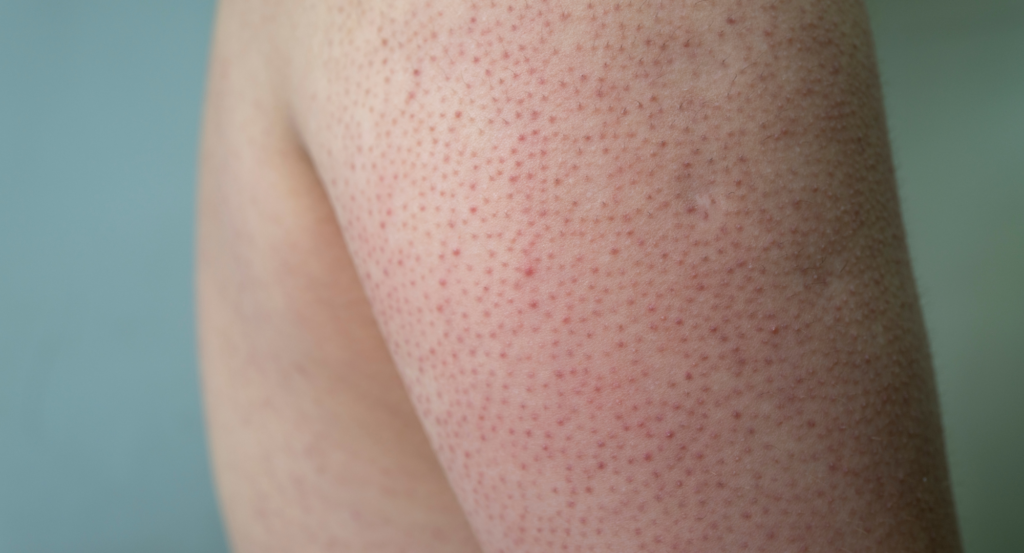Keratosis pilaris, often referred to as “chicken skin,” is a common but often misunderstood skin condition. Characterized by small, rough bumps on the skin, particularly on the arms, thighs, cheeks, and buttocks, keratosis pilaris can be a source of frustration and self-consciousness for many individuals. In this blog post, we’ll delve into the causes, symptoms, and various treatment options available for managing this condition.

Understanding Keratosis Pilaris:
Keratosis pilaris is a benign skin condition that occurs when keratin, a protein that protects the skin, clogs hair follicles. This leads to the formation of small, rough bumps, often with a texture resembling sandpaper or goosebumps. While keratosis pilaris is usually harmless and doesn’t cause any discomfort, it can be visually bothersome for some people, especially when it appears on prominent areas of the body.
Causes:
The exact cause of keratosis pilaris is not fully understood, but several factors may contribute to its development:
- Genetics: Keratosis pilaris often runs in families, suggesting a genetic predisposition to the condition.
- Dry Skin: Individuals with dry skin are more prone to developing keratosis pilaris as the lack of moisture can exacerbate the buildup of keratin around hair follicles.
- Hormonal Changes: Fluctuations in hormone levels, particularly during puberty, pregnancy, or menopause, can trigger or worsen keratosis pilaris.
- Other Skin Conditions: Keratosis pilaris may also be associated with other skin conditions such as eczema or ichthyosis.
Symptoms:
The primary symptom of keratosis pilaris is the presence of small, rough bumps on the skin, typically with a whitish or reddish hue. These bumps may feel rough to the touch and are often accompanied by dryness and occasional itching. While keratosis pilaris most commonly affects the arms, thighs, cheeks, and buttocks, it can also occur on other areas of the body.
Treatment Options:
While there is no cure for keratosis pilaris, several treatment options can help manage its symptoms and improve the appearance of the skin:
- Moisturisers: Regularly moisturising the affected areas can help soften the skin and reduce the buildup of keratin. Look for moisturisers containing urea, lactic acid, or salicylic acid, which can help exfoliate the skin and unclog pores.
- Exfoliation: Gentle exfoliation can help remove dead skin cells and smooth the skin’s texture. Use a mild exfoliator.
- Topical Treatments: Over-the-counter creams and lotions containing ingredients such as retinoids or alpha hydroxy acids (AHAs) may help improve the appearance of keratosis pilaris by promoting cell turnover and reducing inflammation.
- Prescription Medications: In more severe cases, a dermatologist may prescribe topical steroids, retinoids, or other medications to help manage symptoms and prevent further irritation.
- Laser Therapy: In some instances, laser therapy may be recommended to reduce the redness and bumpiness associated with keratosis pilaris. This treatment option works by targeting the affected areas with concentrated light energy to improve skin texture and tone.
Conclusion:
Keratosis pilaris is a common skin condition that affects millions of people worldwide. While it may be a source of cosmetic concern for some individuals, it is generally harmless and can be effectively managed with proper skincare and treatment. By understanding the causes, symptoms, and available treatment options for keratosis pilaris, individuals can take proactive steps to improve the appearance and texture of their skin, leading to increased confidence and self-esteem. If you’re struggling with keratosis pilaris, consider consulting with a dermatologist to determine the best course of action for your specific needs.

